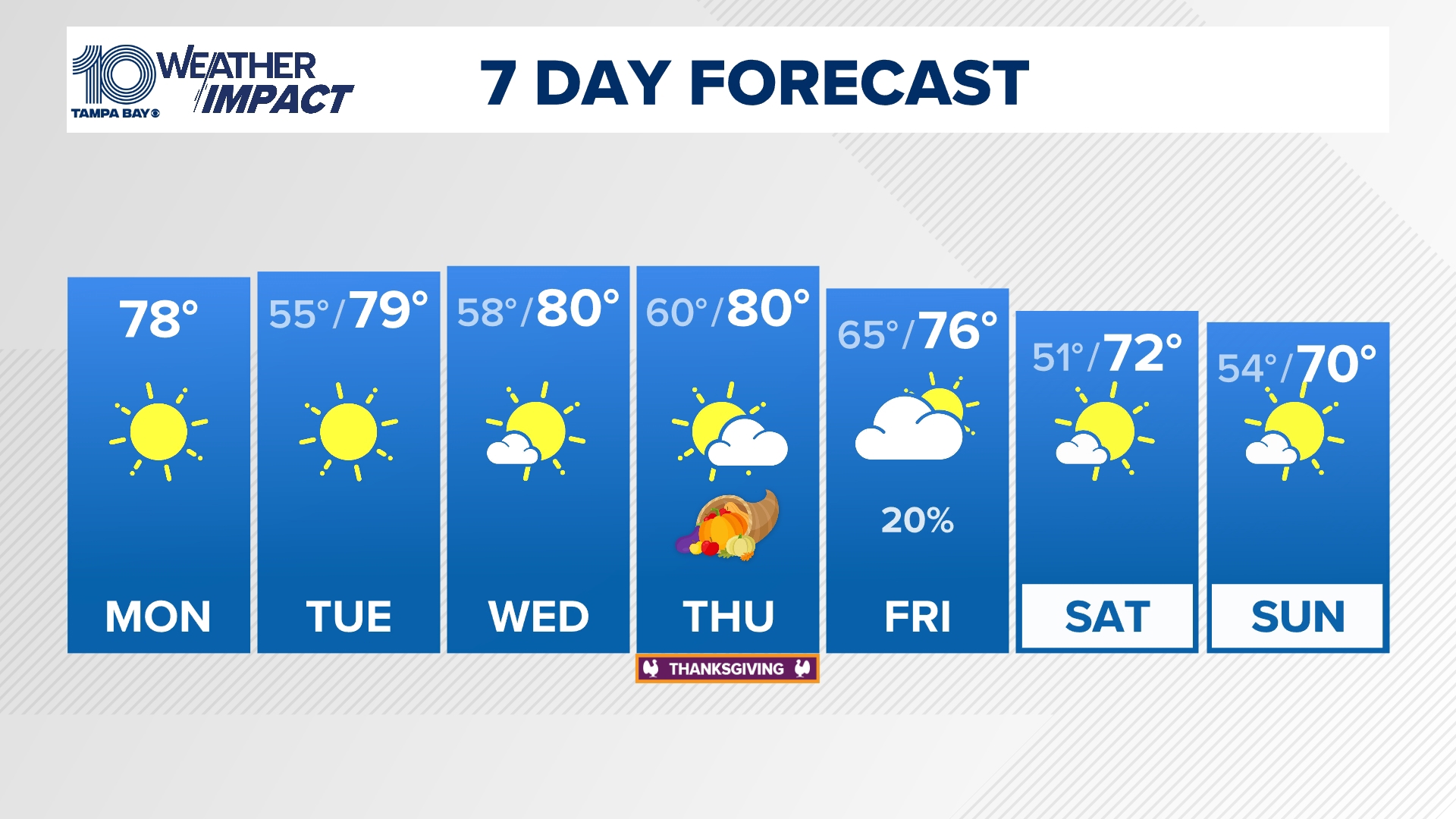ST. PETERSBURG, Fla. — As Florida nears both the end of summer and the peak of hurricane season, surrounding water temperatures are bound to be hotter than at other times of the year – especially in the Gulf of Mexico.
But what happens to water temperatures after a hurricane blows through the area? A look at current temps for the Gulf along some areas of Florida's west coast in the wake of Hurricane Idalia shows a slight decrease in the average climate.
According to a data table from the National Centers for Environmental Information, coastal cities like Venice, Fort Myers, Port Manatee, St. Petersburg, East Bay, Clearwater Beach, Apalachicola, Panama City Beach and Pensacola are all showing below-average water temperatures for this time of year.
Here's a breakdown of the average and current temperatures (11 a.m. on Monday, Sept. 4):
- Venice
- Current: 84.4
- Average: 87.4
- Fort Myers
- Current: 84.4
- Average: 87.1
- Port Manatee
- Current: 82.4
- Average: 87.6
- St. Petersburg
- Current: 85.5
- Average: 88.6
- East Bay
- Current: 86.2
- Average: 88.3
- Clearwater Beach
- Current: 85.1
- Average: 87.7
- Apalachicola
- Current: 84.2
- Average: 84.9
- Panama City Beach
- Current: 85.1
- Average: 85.4
- Pensacola
- Current: 85.3
- Average: 86.4
West Tampa and Old Port Tampa are the only areas as of 11 a.m. showing average water temps with the average being 85.6 and 88.3 degrees respectively.
NASA Earth Observatory explains hurricanes actually cool the ocean by basically being a "heat engine" that transfers heat from the surface of the ocean to the atmosphere through evaporation.
"Cooling is also caused by upwelling of cold water from below due to the suction effect of the low-pressure center of the storm," the agency explains online. "Additional cooling may come from cold water from raindrops that remain on the ocean surface for a time."
Along with those reasons, clouds can also play a role in the cooler temperatures by blocking direct sunlight from hitting the water.



